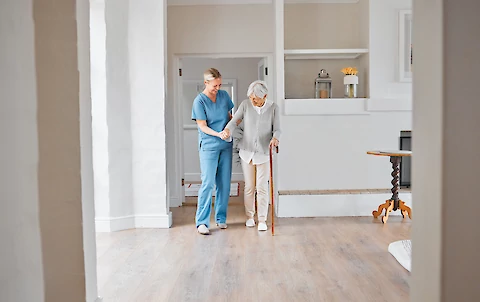
When it comes to living independently as a senior, ensuring safety is paramount. One of the most significant concerns older adults face is the risk of falls. Fall risks can have severe consequences, including injury and loss of independence in seniors.
At Senior Helpers Dayton, we understand these challenges and aim to provide you with valuable insights on how to mitigate these risks. We vow to guide you through understanding why falls are particularly hazardous for seniors and help you explore the most common fall risks from both environmental and health perspectives. With these practical strategies in mind, you can reduce the likelihood of falls.
Keeping seniors safe, healthy, and empowered in their homes is our utmost priority. Let's delve into the essential steps for preventing these mishaps.
Understand Seniors' Fall Risks
Falls can lead to serious injuries such as fractures and head trauma. Subsequent hospital stays can even exacerbate existing health conditions. Moreover, the fear of falling can impede seniors' independence, creating a further negative impact on their overall health and well-being.
Learn Common Environmental Fall Risks
An unsafe environment substantially increases the likelihood of falls. For instance, poor lighting can obscure obstacles, so it's prudent to install brighter, motion-sensing lights that clearly illuminate every path. Cluttered floors are another common culprit. Regularly cleaning and organizing living spaces can help reduce seniors' likelihood of tripping. Slippery surfaces, often found in bathrooms and kitchen areas, also pose a significant hazard. That is why it is important to use non-slip mats to mitigate this risk. Lastly, unstable furniture may cause a loss of balance; hence, it's crucial to secure unstable items and opt for sturdy furniture.
Discover Health Conditions That Increase Fall Risks for Seniors
Several health conditions can elevate fall risks for seniors. Vision problems can make it difficult to navigate around obstacles, making regular eye check-ups and wearing prescribed glasses vital. Balance and gait problems, common in older adults, need to be addressed through regular exercise and, if necessary, physiotherapy. Additionally, some medications may cause dizziness or disorientation. Regular reviews of medication with a healthcare provider can ensure that side effects are managed effectively.
Learn Additional Tips to Reduce Fall Risks
Coupled with environmental adjustments and managing health conditions, there are additional steps to significantly reduce fall risks for seniors. Wearing proper footwear, preferably non-slip and well-fitting, can provide stability. In certain cases, using assistive devices like canes or walkers can add an extra layer of safety. Moreover, a healthy diet rich in Vitamin D and calcium strengthens bones and reduces the risk of fractures if a fall does occur.
Work With Senior Helpers Dayton
Fall prevention for seniors living independently is essential for maintaining quality of life. By addressing environmental and health factors, and incorporating some simple strategies, the likelihood of falls can be significantly reduced.
If you or a loved one are seeking personalized strategies for fall prevention according to your specific needs and living conditions, contact us at Senior Helpers Dayton. We can help in ensuring the safety and independence of seniors living in Centerville, Beavercreek, Oakwood, Kettering, and Huber Heights. Don't just wait for falls to happen; take the necessary preventative measures for a safer and healthier life.